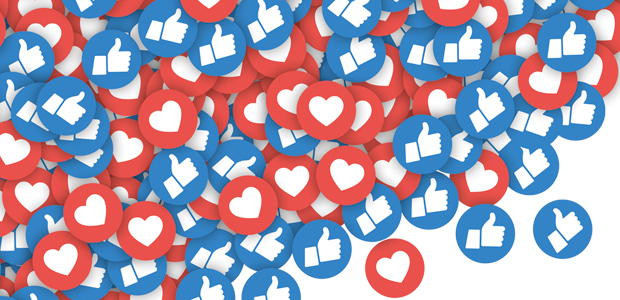Nowadays heaps of memes, videos and other content sweep across our collective retinas. As ever more people join the ranks of the ‘on-line’, and existing netizens spent more time there due to the still raging pandemic, an ideal breeding ground for media to go ‘viral’ emerged. Can things really go viral though? Are there unwritten rules or non-obvious factors? Let’s explore.
They Landed on the Beaches
It was a summer day. Just a couple of hours ago there was no one, but then hordes of people descended on the beaches of The Hague. They came not in ships, but via cars and trains. They were not coming to free us, but to capture something. They were not armed with weapons, but with mobile phones.

2016 saw the rise of the popular augmented reality mobile game Pokémon Go. The municipality of The Hague threatened to sue Niantic, the maker of the game, as it invited people to capture Pokémon in the nature preserve of Kijkduin. The visitors ruined both nature and the infrastructure, including going as far as damaging streetlights to tap electricity to charge their phones.
Too many, me included, this craze came out of the blue. Admittedly, I missed the excitement as Pokémon was not an integral part of my youth. Nevertheless, I wondered: how could an app become so popular in overnight?
Pokémon Go is a commercial product. Two years before its release the concept of capturing Pokémon on a map was a Google April’s Fools ‘announcement’. This contributed to a pre-release hype. Combined with augmented reality maturing on phones, the game came at a good inflection point. Nevertheless, it was not particularly well received judging from the reviews. Still, many pointed to it as ‘having gone viral’, and its sudden popularity seemed to underscore that. What do we mean when we say something goes viral?
Viral Roots
The main idea behind viral effects is that if once you produce something, another user on the Internet may stumble upon it and share it with others. Those users in turn share it with their friends, and so on. This sharing snowballs the content, and indirectly its creator, to fame.
The idea is attractive: make something that appeals and success is virtually guaranteed. It also has an easily recognized analog in the spread of biological viruses. Unfortunately, it is also incorrect.
This should not come as a surprise, as for every Justin Bieber ‘discovered’, there are many thousands of others at or above his level that remain outside the limelight. We already learned that Pokémon Go was not even that good judging from reviews. If it is not the inherent quality, what else is it that can make something popular quickly? It turns out three factors play a role: similarity, reach and luck.
Similarity: Look in the Mirror
If you hear “and I … will always love you”, you likely think first of Whitney Houston. She recorded the song for the movie The Bodyguard released in 1992. However, Dolly Parton originally wrote and performed it about two decades earlier.

The popularity of Houston’s cover version of the original Dolly Parton song points us to an important factor that affects popularity: similarity.
A work should be sufficiently similar to something that we already know, but sufficiently dissimilar so it also feels like something new. The creative equivalent of walking a tightrope. Clearly Whitney Houston succeeded with her rendition of the song. There are countless other songs where a later interpretation overtook the original in popularity.
In conclusion: make things too dissimilar, and you’ll find only a niche audience, if at all. Make things to similar and you may face either a lawsuit or a bored audience. Finding the sweet spot is key, but it’s not the only factor.
Reach: What’s the Size of Your Horn?
Researchers found that on the social media platform Twitter, ninety percent of all tweets do not get shared at all [2, 3]. The ones that were shared often, did not actually go viral in the ‘snowball’ sense. Instead it seems that the reach of a twitter user, the number of followers, dominates the popularity of his or her tweets as factor.

This brings us back to the principles of traditional broadcast media that predate the internet. Content that spreads quickly, starts that spread from a source that is already popular. One followed by millions. If you have a bigger horn, it’s is much easier to get heard.
Your content thus needs to be picked up and forwarded by someone with a lot of reach. A ‘super-spreader’ in viral parlance. Hence, the reason that books promoted by the likes of Bill Gates, and Oprah Winfrey find a broad audience quite quickly. Social media seem much more in line with traditional broadcast media in that sense, and are not that different after all.
Luck: Time it Just Right
Microsoft struggled with releasing a ‘Tablet PC’ in the early noughties, less than a decade later Apple would take the world by storm with the release of the iPad. Admittedly, technological hurdles evaporated by that time, and large scale adoption of mobile smartphones further paved the way for this. However, that just proves the point: the timing was right.
Timing does not necessarily imply that any changes need to be made at all, nor does it imply any form of explicit control on the creators part. Peter Andre’s reggae song Mysterious Girl, released in 1995, initially appeared low in the charts. However one year later, the summer of 1996, it topped the charts, and youth throughout the world was dancing to this infectious song.
Conclusion
With regard to popular content there is no perfect recipe to replicate. It is not that the quality of content is not important. It is simply not the only factor at play, and in many cases not the dominant one. Novelty, familiarity and the broadcast effect play a role, but a part of it is also due to sheer chance. A combination of these likely contributed to Pokémon Go’s popularity.
What hit took you by surprise?
References
- Thompson, D. (2017). Hit Makers: The Science of Popularity in an Age of Distraction.
- Cazabet, R. et al. (2013). Information Diffusion on Twitter.
- Goel, S. et al. (2015). The Structural Virality of Online Diffusion.
- Vergara, J. (2018). Analyzing the Rise and Fall of Pokemon Go.
- Warren, T. (2020). Former Windows chief reveals Microsoft’s reaction to the iPad.

